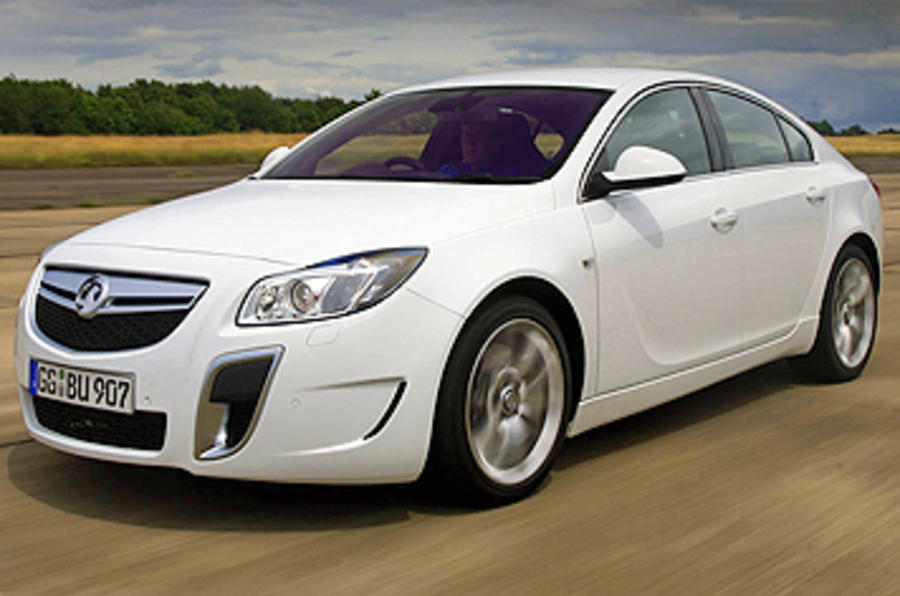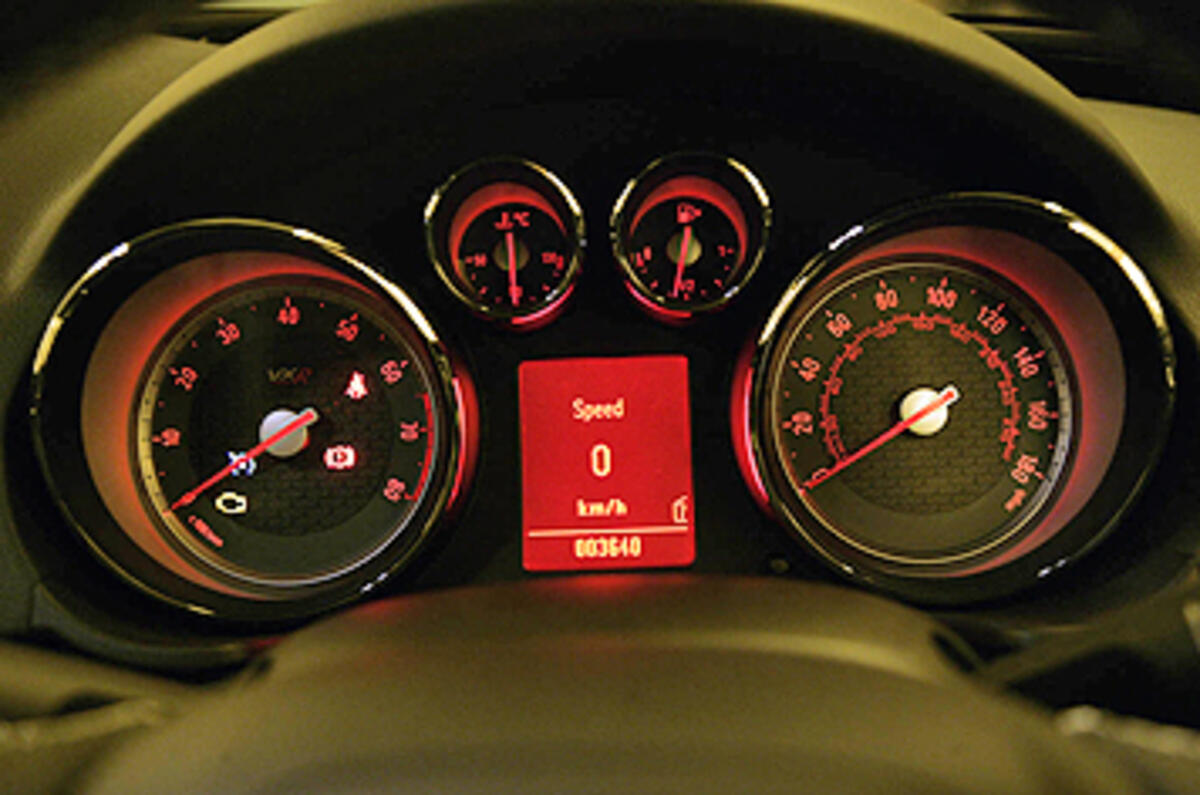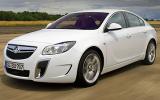What is it?
According to its creators, the Insignia VXR is three things: the 155 mph flagship version of Vauxhall’s thriving Insignia executive car range, the car that finally lifts its 10-year run of VXR-badged performance models above the raucous, boy-racer tag that has always stuck to them, and a performance car from GM Europe that honestly deserves to turn a BMW buyer’s head.
These are big claims — and assessing each one depends on a dispassionate examination of the driving experience, so we drove a car as fast as we could legally go from Frankfurt to London, to discover the worth of them.
What's it like?
Well, it certainly has the on-paper credentials.
The 2.8-litre turbo V6 has hotter camshaft profiles, bigger injection nozzles and more aggressive engine management parameters so it produces 321 bhp at 5250 rpm instead of the standard V6’s 255.
It gets a high performance 4wd system with electronically managed torque splits, adaptive electronic traction controls depending on how you drive, plus lightweight Brembo brakes with four-piston calipers and hybrid alloy discs with cast-iron centres.
You get a specially tuned chassis, 20mm lower than standard, including special, low-friction “hyperstruts” that cut steering friction and improve feel. You get a three-level ride control system (firm, hard, harder), which also adjusts things like steering weight and accelerator “alertness” as it goes.
There’s a magnificent set of specially adapted Recaro seats and just about every interior nicety you can imagine, short of on-board TV and radar cruise control.
The VXR is relatively quiet but sounds lovely when you give it the beans. It is governed at 155 mph (could probably crack 170), can run a 0-60 mph sprint in 5.8 seconds, and accelerates 50-75 mph in 7.1 seconds.
That’s big performance in a cross-Europe grand touring sense, but not quite enough to match true tyre-burners like the BMW M5 or Audi RS6. But few owners will think it too slow.
Here’s the point: everything has been done with thoroughness and subtelty. The steering is sensitive and has great feel. The engine’s smooth, powerful and entirely free of turbo-lag.
The standard ride condition is firm but comfortable, while more aggressive settings (really only needed for hard driving) work well with the power, even on Britain’s bad roads.
The brakes are extremely powerful, the firm, shapely seats are comfortable for 200 mioles at a time, and the whole car has a base level of smoothness and mechanical refinement that makes you seriously doubt the speedo when it’s reading 120 mph.
Should I buy one?
Yes. Against other cars of its size, equipment and capability, the Insignia VXR is a spectacular bargain. Entry price for a saloon or hatchback is a paltry £30,995, or £32,320 for an estate.
The car is so well equipped that it is only possible to add three options: 20-inch wheels at £1100, a leather pack at £1300 and on-board navigation for £815.
The lack of a big name is a declining problem: the sheer presence of this go-faster Insignia, together the spreading realisation that VXR cars do what is claimed for them, helps a lot.



























































Join the debate
Add your comment
Re: Vauxhall Insignia 2.8 V6 VXR
Well, I liked Insignia aftershave (I have fond memories, I think....). Mind you, I like some of those Lynx deodorants, so what do I know?
Therefore as my taste may well be rubbish (IMO) you can disregard the fact that this Vauxhall should be an Opel as previously stated earlier.
I don't have fond memories of Vauxhall nor their stupid grille badging.
Re: Vauxhall Insignia 2.8 V6 VXR
Sounds like the BMW dealership I have had the misfortune to use.....
Re: Vauxhall Insignia 2.8 V6 VXR
Dear Mr Obamabeach,
Without being rude, I would like to draw your attention to the very article you are claiming to rubbish me with.
Lexus, who has held the luxury sales title in the U.S. since 2000, appears to be being outsold by BMW. Leftlane News reported that BMW, who hasn't held the top-selling premium brand spot in the U.S. since 1997, has sold 76,819 units through the end of May. Comparatively, Lexus has sold 73,168 vehicles in the U.S. between January 1 and May 31, 2009. While the year is less than half over, these early sales figures suggest BMW could be resonating with their target market a bit more effectively than Lexus.
Excuse the font - not sure how to make it smaller.
Anyway - as you can see, Lexus has held the top spot since the year 2000. Of course, for the first 5 months of 2009 it does indeed look like BMW is up by a "whopping" 5%.